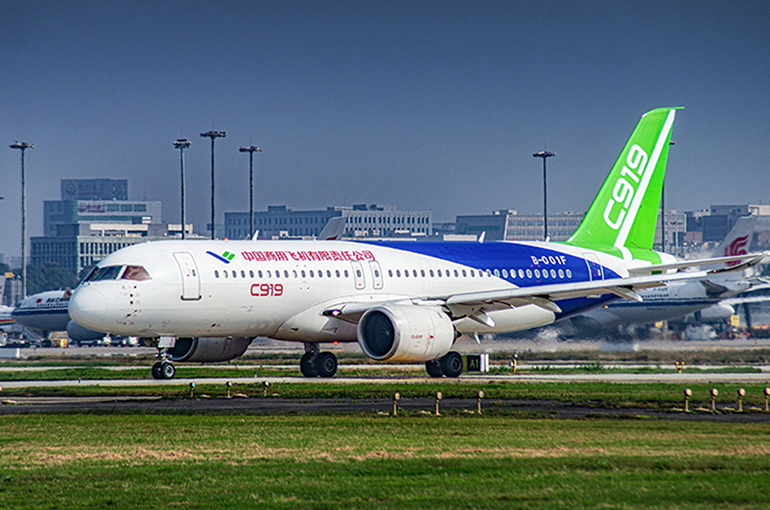 Malaysia Airlines Parent Weighs COMAC Jet Purchase Amid Industry Delays
Malaysia Airlines Parent Weighs COMAC Jet Purchase Amid Industry Delays(Yicai) Oct.30 -- Malaysia Aviation Group, the owner of brands Malaysia Airlines, Firefly, and MASwings, is “seriously” considering aircraft from the Commercial Aircraft Corporation of China for its future fleet, as part of its long-term development plan through 2035 to 2040, the group’s managing director told Yicai in an exclusive interview.
“We are evaluating aircraft models that can support the group’s growth, and COMAC models are also under consideration -- we take this very seriously,” said Datuk Captain Izham Ismail, group managing director of MAG.
The evaluation is part of the airline's plans for the five-year period ending in 2040. "Our communication with COMAC began last year, deepened further in the second quarter of this year, and we will continue to evaluate the C919 as a potential candidate for Malaysia Airlines’ future fleet."
The group is currently focused on the larger C919 narrow-body aircraft, though Ismail emphasized a cautious approach as the airline continues its post-pandemic recovery. “Any business decision must consider innovation, safety, airworthiness certification, operational feasibility, and most importantly, commercial value,” he said, adding that a final decision “may be made around 2026.”
Ismail said the airline has not yet inquired about delivery timelines or visited COMAC’s facilities.
Industry-Wide Delays
Malaysia Airlines’ evaluation of new manufacturers comes amid widespread aircraft delivery delays affecting global carriers. “We are facing delivery delays for all aircraft models, ranging from three to six months,” Ismail said, attributing the setbacks to ongoing supply chain disruptions. “Honestly, original equipment manufacturers need to do better.”
The delays extend to engine maintenance, with overhauls that normally take about two months now stretching up to a year. This includes engines from Rolls-Royce and Pratt & Whitney, though GE is doing much better now, he said.
“I want to praise GE because they understand customer needs,” Ismail said, adding that the American conglomerate has worked very closely with MAG, significantly improving engine turnaround times.
Ismail does not expect the situation to improve soon. “In my crystal ball -- not soon. Maybe in three to five years,” he told Yicai, citing geopolitical tensions, material shortages from the war in Ukraine, and a post-pandemic loss of skilled labor as major factors.
Despite these challenges, he argued that OEMs could do more. “OEMs still have other ways to improve engine turnaround efficiency—for example, if maintenance that originally took 50 days is delayed due to raw materials, they should shorten the time as much as possible.”
Impact on China Recovery
These industry-wide delivery delays have also slowed Malaysia Airlines’ capacity recovery in China, despite passenger demand already returning to pre-pandemic levels. Ismail said current capacity stands at about 70 percent of pre-pandemic levels.
“We are adjusting our route network and hope to increase capacity on Chinese routes next year,” he said, adding that new A330neo deliveries could accelerate the recovery if they arrive on schedule.
The carrier plans to launch a Chengdu route in January 2026 and is also considering Shenzhen.
Despite capacity constraints, performance remains strong. Bookings from China during the recent Golden Week holiday rose 41 percent year on year, with an overall load factor of 82 percent and business class occupancy above 90 percent. Around 60 percent of passengers from China use Kuala Lumpur as a transit hub to destinations including Indonesia, the Maldives, and Australia.
This reflects a clear post-pandemic trend toward premium travel, Ismail observed. “The business class on Australian routes is often full,” the executive said. “I wanted to return to Malaysia tomorrow, but there were no business class seats available—I have to wait another day. That’s the real situation of growing premium demand.”
Editor: Emmi Laine